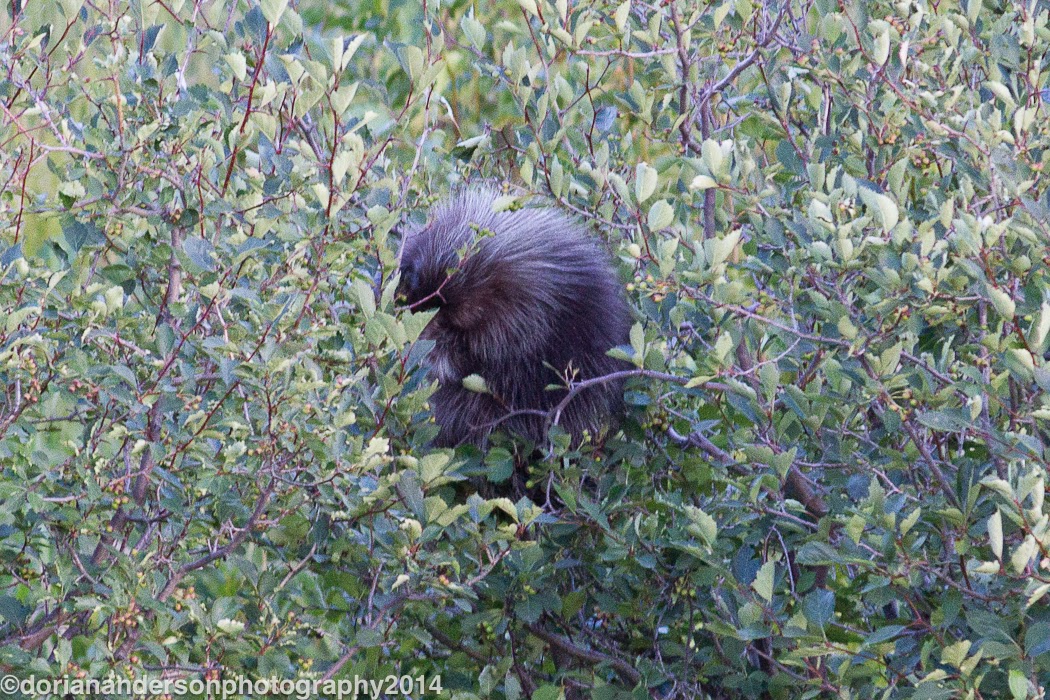Lush meadow downslope to the east -
this is where the owl has been seen
Sage and mountains to the west
Wait for me mom! 2 of 5 moose I saw today.
Once the sun got a high in the sky (around 11am), I abandoned the owl hunt and switched my focus to the woodpecker. There are several eBird reports of Black-backed woodpecker in the vicinity of the Death Canyon trailhead. From the satellite imagery, I could see that there was a decent sized burn where these reports originated. Black-backed woodpeckers (like Three-toed and White-headed woodpeckers) really like burned areas, so this looked really promising.
Burn can be seen along left hand side of
road leading to Death Canyon Trailhead
Inside the burn
What I am willing to bet my life is a recently
vacated Black-backed nesting cavity
Probable Calliope from this morning.....
Woodpeckering is fun because one needs to walk around in the burn and listen for the tap-tap-tapping characteristic of the birds. Once the tapping is heard, it's exciting to track it down and ascertain which species is making it. Each time I heard the tapping I would get excited that it could be the Black-backed, and each time on my first pass through the burn I was disappointed; I found only 3 Hairy woodpecker, 3 Flickers, and 1 Williamson's sapsucker (a nice consolation). Doubt started to creep into my mind as to whether or not I was going to find this bird today. However, these are the times one must continue birding, and bird on I did. Cutting further into the burn, I headed back downslope towards where I had ditched my bike. TAP TAP TAP - another opportunity! I crept towards the sound and with fairly little effort laid eyes on a single Black-backed woodpecker for #511. Another bird soon rounded the tree. These two were exceptionally cooperative, and I spent the better part of half an hour following them around as they did their thing. I have seen this species only once before (in Maine in the Bigelow Wilderness in 2006 or so), so it was really sweet to see them this well today!
Williamson's sapsucker
Took a while to get a shot without
a million branches in it
The above alluded to "million branches"
The woodpecker was a huge find for me and now leaves the ever-problematic owl as the biggest potential prize here in Jackson. As I said yesterday, I think there are folks around who have decent leads on this bird, but they like to keep this information close to the vest. This is because owls are very loyal to their particular haunts, and once the location of these haunts in made public, the areas are inundated with people who want to see the owls. This can cause great disturbance to the birds, so people often keep their locations husk-hush to prevent this. I was this afternoon feeling a bit discouraged about my prospects of finding the owl, but it looks as though something might break for me on the information front tomorrow (I am being deliberately vague). Fingers crossed.......
Just 40 miles today.....legs and ass feel good!
Oh snap.....I almost forgot! I saw a life animal today! It wasn't the best view and the sun was already behind the mountains, but I got my life view of a porcupine this evening. He had climbed up in a bush and was gorging himself on berries.






















































